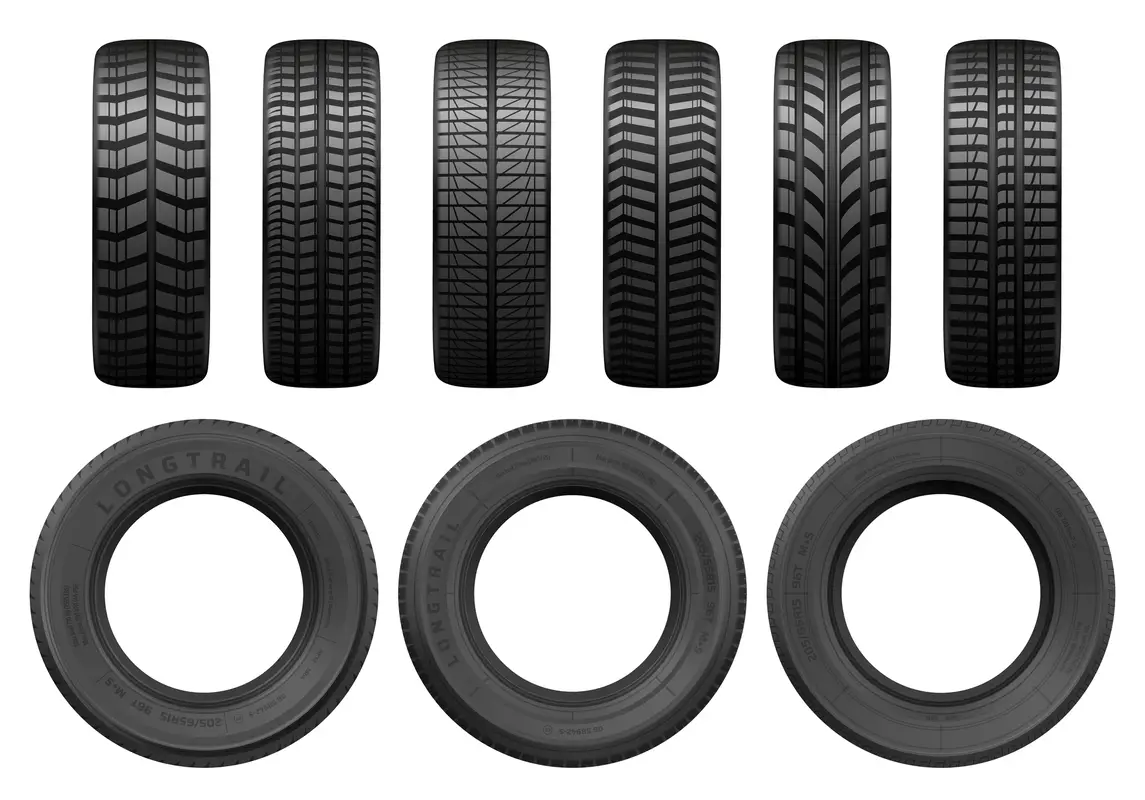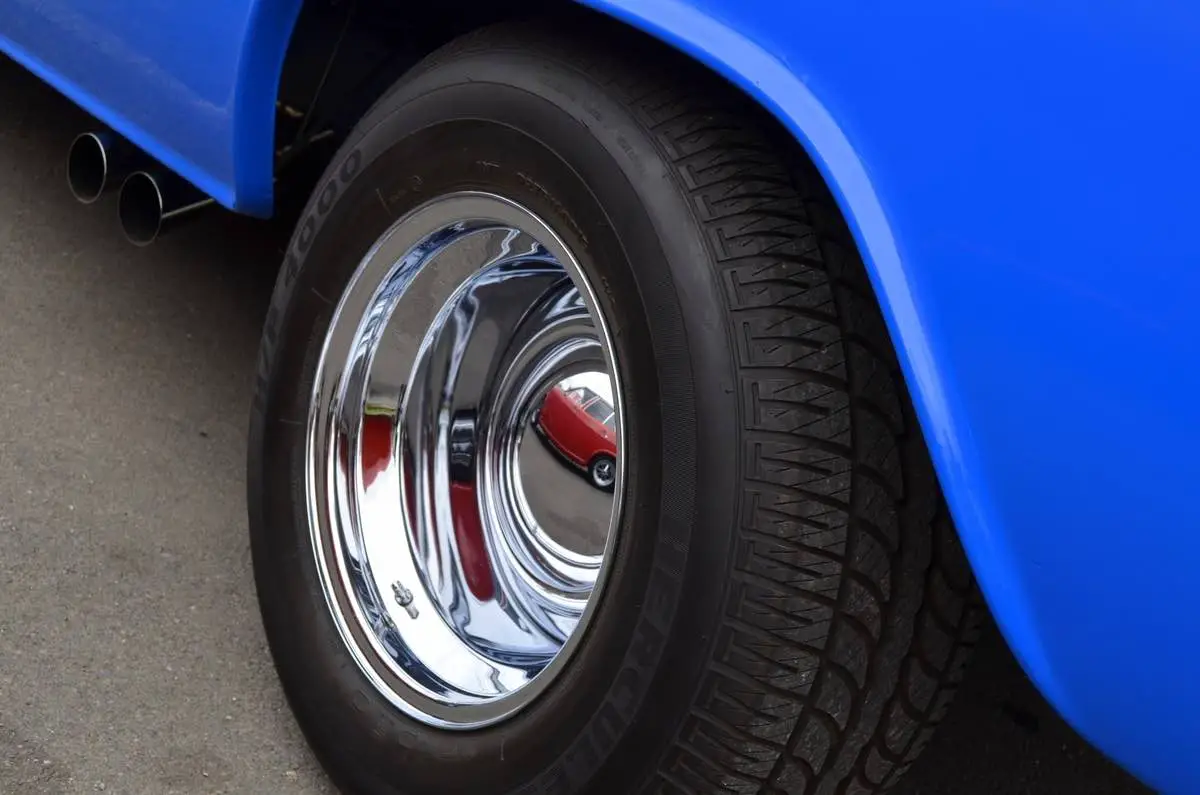When you have a truck, at some point in time, you will inevitably end up on a trail that lets you enjoy the machine’s raw power. Having the right tires is crucial to have the best on- or off-road driving experience. You can use many different types of tires on a truck – but are truck tires directional?
Truck tires are mostly not directional since trucks are primarily designed for off-roading, and directional tires are usually made for on-road driving. However, some directional tires are designed for both on-road and off-road driving.
Many people do not know which type of tires are best suited for their trucks and end up buying something that doesn’t fit their purpose. In the rest of this article, I will discuss the characteristics of directional tires in more detail. I will also go through other types of tires and under which circumstances you should use them.

Directional and Non-Directional Tires
While there are many different types of tires to choose from, there are primarily two categories of tires: directional and non-directional. Let’s explore each category in more detail.
Directional Tires
To identify a directional tire, examine the tread on the tire’s surface: if you see a pattern that looks like the letter V, you’ve got a directional tire. This pattern will look like two halves of the tire are converging to make a V shape.
When To Use Directional Tires on a Truck
Directional tires are best for on-road performance and driving on wet surfaces. They are specifically designed to expel water outwards and avoid hydroplaning. You can install directional tires on your truck if you only use them over the road. However, there are specific models of directional tires designed for off-roading.
Directional tires designed for on-road driving should never be used for off-roading since the tread cannot handle rough terrain. These tires will get damaged and will wear at an accelerated rate if used out of their element.
It is also important to note that directional tires are made to rotate in only one direction, hence the name ‘directional.’ When you require a rotation, ensure the tires stay on the same side of the truck – meaning that you will switch the front tire to the back and so on. If you’d like to rotate the tires conventionally, you’ll have to dismount the tire and mount it on the other side of the truck.
Non-Directional Tires
Non-directional tires are best used off-road or in a combination of both on and off-road. Let’s look at the different types of tires in this category.
Symmetrical Tires
This is the most common type of tread pattern and is best suited for off-road trucks. Symmetrical tires have a tread pattern that looks the same across the entire surface. Because of this, they provide more traction, which is why they are more suitable for off-roading.
You will find most trucks equipped with these types of tires because of their ability to provide a high level of grip. Symmetrical tires can be rotated across both sides of the vehicle, and you can choose from several rotation patterns.
Asymmetrical Tires
The surface of an asymmetrical tire is designed so that one half is different from the other. For example, one side of the tire could have a symmetrical tread pattern while the other half could have a directional pattern.
Asymmetrical tires give you the best of both worlds. They are very effective when it comes to driving over water and snow and are equally capable of giving dry traction. Like directional tires, asymmetrical tires can only be installed on one side of the vehicle to maintain its direction.
Other Types of Truck Tires
The categories we’re going to look at below all fall under either directional or non-directional.
However, I’m discussing them separately because these types of tires are designed exclusively for trucks: they consist of tread patterns that outperform other tire types in off-road conditions. Some of them can be used on and off-road as well.
They include:
- All-Terrain tires (AT): These tires are designed for someone who drives to work every day but still likes to hit the trail every now and then to blow off some steam. All-Terrain AT tires perform well both on and off-road, although they don’t particularly excel in either of those situations. Think of them as a jack of all trades: they can do everything, but they don’t stand out in anything.
- Mud tires (MT): As the name suggests, these tires handle mud, sand, water, debris, and even snow quite well. They are specifically designed for off-roading, and if you use them on the road for an extended period, you will wear them out quickly. Use these tires if you have a truck that is dedicated to off-roading.
- Sand tires: Also self-explanatory from their name, these tires are made for sandy conditions and have paddles that help navigate sand dunes. These are the perfect choice for somebody who lives in a desert city and likes to hit the dunes on the weekend. However, these tires are not designed to be used on the road since that would wear them out at an accelerated rate.
- Snow tires: Many people think they can get away with using regular tires on a snow-covered road. However, it’s not advisable, and that is how most accidents happen. Snow tires are designed to keep traction on the road, especially during snowy or icy conditions. They are built with a softer rubber that does not stiffen in cold weather.

Conclusion
Selecting the right type of tire for your truck is the most essential part of having a smooth experience, either on or off-road. Ensure that you understand the different types of tires and under which conditions they perform best before making a purchase.
Trucks with directional tires are best suited for on-road driving and wet surfaces and not off-roading. Non-directional tires, such as symmetrical and asymmetrical tires, are your best bet for off-road driving.
Sources
- VEHQ: Are Car Tires Directional Or Non-Directional? [And How To Tell]
- Off-Roader X: Off Road Tire Tread Patterns
- Ask Car Mechanic: How to Tell if Tires Are Directional?
- SD Wheel: Top 5 Mud Tires
- Firestone Complete Auto Care: What Are Directional Tires & Their Benefits?
- Rigforge: Do You Rotate Off-Road Tires? When And How?
- Carwale: Symmetric tyres vs Asymmetric tyres
- RBP Tires: Repulsor
